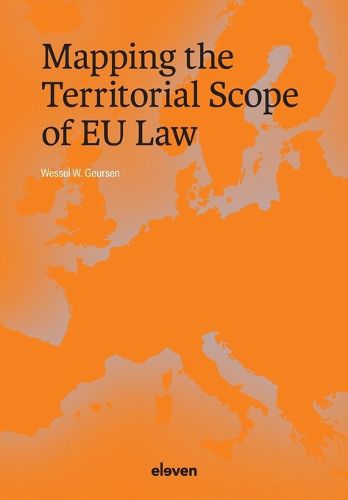Readings Newsletter
Become a Readings Member to make your shopping experience even easier.
Sign in or sign up for free!
You’re not far away from qualifying for FREE standard shipping within Australia
You’ve qualified for FREE standard shipping within Australia
The cart is loading…






This title is printed to order. This book may have been self-published. If so, we cannot guarantee the quality of the content. In the main most books will have gone through the editing process however some may not. We therefore suggest that you be aware of this before ordering this book. If in doubt check either the author or publisher’s details as we are unable to accept any returns unless they are faulty. Please contact us if you have any questions.
'Wessel Geursen's work is more than "mapping", it is a very thorough in-depth examination of the way EU law applies to its member states' territories, and in certain circumstances to third states' territories.' Part of foreword by Jacques Ziller, Honorary professor at Paris 1 Pantheon-Sorbonne, and Universita di Pavia
With increased globalisation, digitisation, cross-border movement of persons and multinational businesses, events and cases have progressively become transnational. Conversely, with the current geopolitical climate, increase of migration and recent pandemics, borders have regained importance. These developments raise questions about the territorial scope of legislation. In this book, 28 mechanisms have been identified which influence the territorial scope of EU law. By using these mechanisms, the territorial scope of any rule of EU law can be determined. The mechanisms relate to decolonisation, overseas countries and territories, disputed borders and territorial claims, Brexit, accession, enhanced cooperation, opt-in and opt-out, the Brussels effect, etc. In addition, this book covers various fields of EU law (free movement rules, migration law, the GDPR, competition law, VAT, sanctions, etc.). The book is unique and stands out from other EU law books, because it encompasses all mechanisms relevant to mapping the territorial scope of the different fields of EU law. It is written for academics, practitioners, policymakers and lawmakers alike.
$9.00 standard shipping within Australia
FREE standard shipping within Australia for orders over $100.00
Express & International shipping calculated at checkout
This title is printed to order. This book may have been self-published. If so, we cannot guarantee the quality of the content. In the main most books will have gone through the editing process however some may not. We therefore suggest that you be aware of this before ordering this book. If in doubt check either the author or publisher’s details as we are unable to accept any returns unless they are faulty. Please contact us if you have any questions.
'Wessel Geursen's work is more than "mapping", it is a very thorough in-depth examination of the way EU law applies to its member states' territories, and in certain circumstances to third states' territories.' Part of foreword by Jacques Ziller, Honorary professor at Paris 1 Pantheon-Sorbonne, and Universita di Pavia
With increased globalisation, digitisation, cross-border movement of persons and multinational businesses, events and cases have progressively become transnational. Conversely, with the current geopolitical climate, increase of migration and recent pandemics, borders have regained importance. These developments raise questions about the territorial scope of legislation. In this book, 28 mechanisms have been identified which influence the territorial scope of EU law. By using these mechanisms, the territorial scope of any rule of EU law can be determined. The mechanisms relate to decolonisation, overseas countries and territories, disputed borders and territorial claims, Brexit, accession, enhanced cooperation, opt-in and opt-out, the Brussels effect, etc. In addition, this book covers various fields of EU law (free movement rules, migration law, the GDPR, competition law, VAT, sanctions, etc.). The book is unique and stands out from other EU law books, because it encompasses all mechanisms relevant to mapping the territorial scope of the different fields of EU law. It is written for academics, practitioners, policymakers and lawmakers alike.